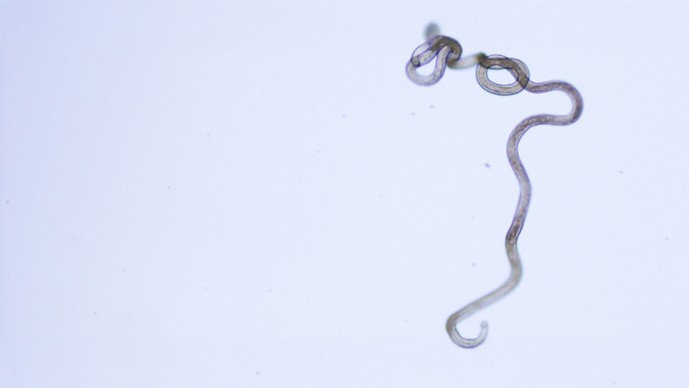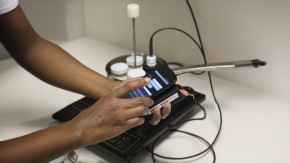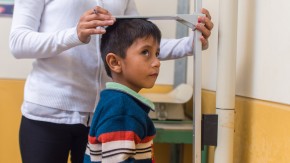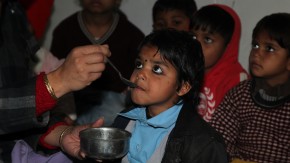Innovation: Taking the Neglect out of Neglected Diseases, Part II
- Trevor Mundel, Oct 31, 2017

I speak often about the connection between early stage research and long-term impact, because without investing in one, you can't have the other. Several months ago, I talked about the fight against onchocerciasis – also known as “river blindness” – as a prime example of an area where we're making excellent progress because of this approach.
In 1987, the pharmaceutical company Merck made history by announcing it would donate the drug ivermectin to any country that asked for it to aid in the fight against river blindness. Merck's continuing donations – and the steadfast commitment of the World Health Organization to control the disease through mass drug administration control programs – have drastically reduced cases in many countries and helped eliminate river blindness in others.
Unfortunately, onchocerciasis remains an acute problem in low-income countries, particularly in Africa. To understand how we can help the 26 million people still living with the disease – and protect the nearly 185 million people who are at risk of contracting it – we need a variety of innovations.
River blindness is caused by a parasite transmitted by black flies that live near fast-flowing rivers in countries where the disease is endemic. As the name suggests, it can cause blindness, as well as hardened, scaly skin and unbearable itching. Ivermectin is effective at killing young parasites, called microfilariae, but there is no proven treatment for killing adult parasites that produce new generations - and the adults can live inside humans for more than 15 years. Since the young parasites are the type transmitted by flies and cause the worst symptoms, administering ivermectin reduces disease transmission and gives people great relief. But they still have to be treated repeatedly for more than 20 years as they wait for the adult worms to die of natural causes.
A drug that targets the adult parasites would make it easier to treat people and eliminate onchocerciasis sooner. But part of the problem with developing such a drug is that it's difficult to study adult worms because they only infect humans and can't be grown in a lab. In fact, for a long time, the only way to obtain adult onchocerciasis parasites was to harvest them surgically from infected people!
Dr. Sara Lustigman knows these challenges very well; she has been working on understanding neglected tropical diseases for 40 years, long before the Gates Foundation existed. For more than 30 years she has been researching river blindness, focusing on ways to prevent the disease by developing preventive vaccines and discovering new drugs that can kill adult worms.
As part of the discovery and development process, she was determined to learn how to grow parasites in a lab. When she first applied for a Grand Challenges grant, she had already figured out how to coax parasites through the first steps of development. But recreating the final transformation of parasites into full-grown adults was proving especially difficult, because it could only happen in human hosts - in tissues that lie just below the skin. She came to us with a simple idea: if the onchocerciasis parasite needs to migrate through human skin to reach tissues where it can fully mature, she would recreate human skin, or a reasonable facsimile of it, in a culture dish.
With a Grand Challenges Explorations grant, Dr. Lustigman was able to figure out which of the many kinds of skin and related cells the worm preferred, and then used those cells and other supporting materials to build three-dimensional, human skin-like models to determine which combination worked best. She was also able to discover the best conditions to grow worms into a form known as the fifth, or L5, stage - think of transforming teenagers into young adults in a lab. The discovery was immediately helpful to researchers looking for ways to test new treatments. They could now test drugs against a form of the parasite that closely approximated the form they needed to eliminate in patients.
Dr. Lustigman sought to extend this breakthrough by developing fully adult, fertile worms as well. In infected humans, these worms are between a foot and a foot and a half long. And to tackle the challenge, Dr. Lustigman needed sophisticated three-dimensional tissue models, the creation of which presented huge obstacles, some of which seemed insurmountable.
At this point that my favorite innovator intervened to lend a hand – serendipity. Not long after Lustigman decided to try to grow fully adult worms, she gave a talk in Germany at the University of Würzburg and learned by chance that they have an entire department dedicated to tissue engineering. She toured the facility and discovered that the department was already creating three-dimensional human skin models to provide graft material for burn victims, to test new creams and cosmetics for safety, and to help another researcher figure out how parasites of all kinds invade skin in the first place.
Through a collaboration with the Department of Tissue Engineering and Regenerative Medicine at the University Hospital of Würzburg, Dr. Lustigman is now working with Dr. Jan Hansmann to develop and test his innovative skin tissue models as she expands on her previous work. She will seek to use these new models to host onchocerciasis parasites for the six-months to one-year period that it takes for the parasite to grow from young adulthood into maturity.
No single innovation solves an entire problem. Once Dr. Lustigman has figured out how to grow adult onchocerciasis parasites in a lab, she and her fellow scientists will still face an uphill battle trying to find the right drugs to defeat the disease. But they now have a reasonable way to devise tests for this purpose and make sure early on that drugs under investigation can kill these adult parasite forms, which gives me great hope that river blindness will soon be a disease that exists in history books alone.



